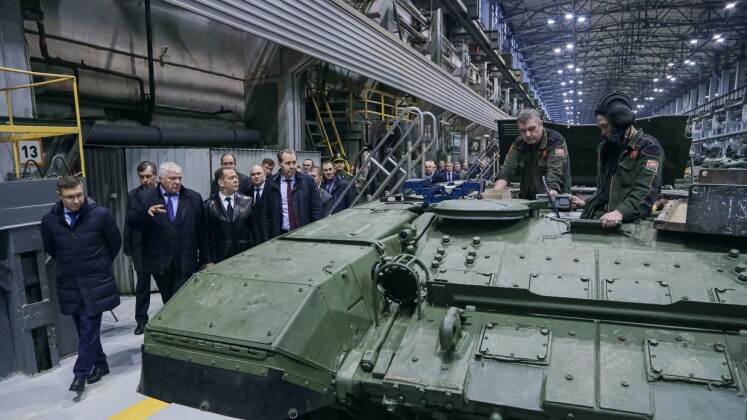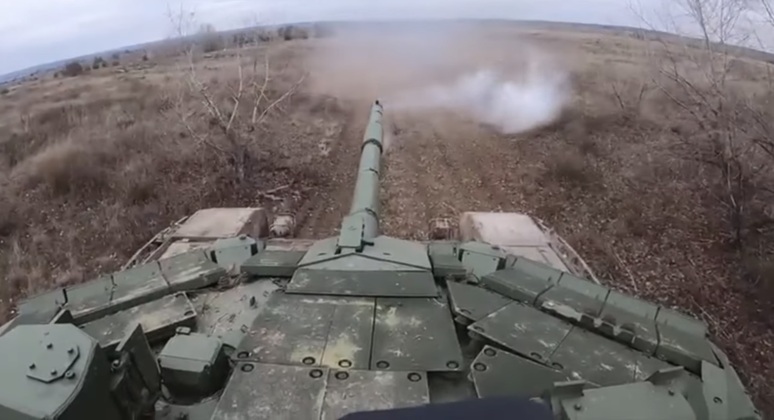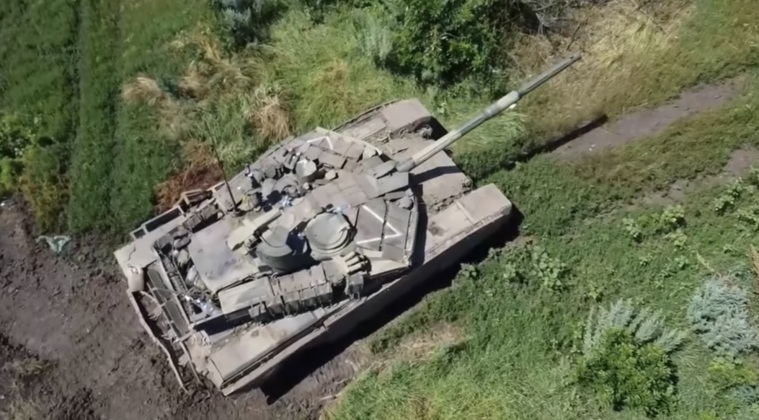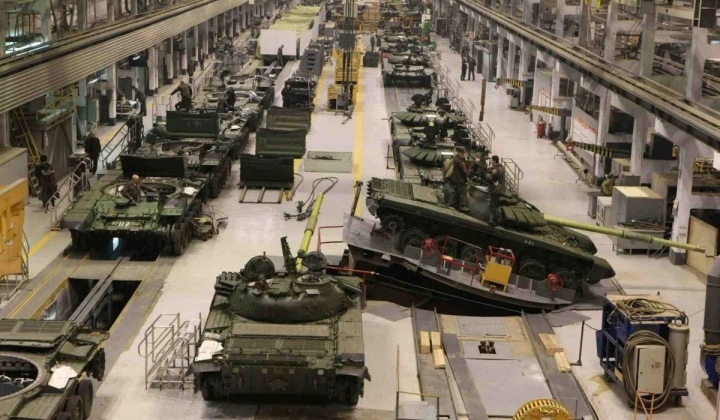News
Russia’s Tank Production ‘Surge’ Falls Far Short of Expectations: Can Industry Meet the Army’s Future Needs?

Throughout much of the Cold War the Soviet tank industry was estimated to be larger than those of the rest of the world combined, with an annual output over 4000 vehicles per year in the 1980s from five separate tank factories, the largest three of which were the Malyshev and Omsktransmash factories producing T-64 and afterwards T-80 tanks and the Uralvagonzavod factory producing cheaper T-72s. The large majority of tanks produced were for the Soviet Army, although the USSR’s tank exports were also many times greater than those of any other state. Following the state’s disintegration in 1991 domestic orders for new tanks effectively ended, with the 2010s seeing the lowest orders of just 10 vehicles for domestic use, while production for 30 years remained at around 100 vehicles annually the last majority of which went abroad. Where in the aviation sector orders from China were key to sustaining the industry through the 1990s, for armour India and Algeria were and continue to remain the leading clients with both having operated more of the new T-90 tanks than the Russian Army itself before 2022. Iran, too, was a leading client in the 1990s until Moscow terminated T-72 exports prematurely before contracts were fulfilled due to pressure from Washington.
The outbreak of full scale hostilities in Ukraine in February 2022 and significant losses among T-72 units in the conflict’s early weeks led to widespread efforts to surge production, with Deputy Chairman Russian Security Council former president Dmitry Medvedev in March 2023 stating that “We will make 1,500 tanks alone this year. You can calculate how much our enemy will get, even according to the most optimistic calculations.” This statement was made after praising the capabilities of the new T-90M variant, a T-72 derivative which has been further enhanced based on experience from hostilities in Ukraine, strongly implying that the escalation in production would affect T-90M numbers. Subsequently in early January 2024 the Defence Ministry announced: “The Land Forces received over 1,500 new and upgraded tanks, as well as over 2,500 infantry fighting vehicles and armoured personnel carriers.” With the T-90M and T-14 being Russia’s only tank classes in production, the latter in very small numbers, this indicated that T-90M numbers had surged tremendously.

Initial projections for a massive surge in Russian tank production appeared somewhat credible due to the tremendous industrial capacity which the country inherited from the Soviet era – which at surged wartime levels was expected to be capable of producing over 7000 T-72s and T-80s annually – the latter at much greater cost and with much longer production times. Thus the possibility of surging T-90 production to over 1000 vehicles, with the tank being a derivative of the less complex T-72, appeared plausible. A closer assessment of Russian tank production, however, indicates otherwise. When Russia placed its first order for 270 T-90Ms in 2017 the vast majority of these were modernised T-90s that had already been built, with newly built vehicles comprising less than one third. These were nevertheless reported as new deliveries implying that tank acquisitions were significant. With the Russian defence sector successfully modernising and refurbishing Soviet built tanks from storage at a rate averaging over 100 per month, significantly improving their combat potentials, these have been presented as new deliveries to claim that the defence sector was “producing 1500 tanks.”

A closer look at T-90M numbers reveals that deliveries are still well below 200 – not much higher than the approximately 130 per year produced before the war. Western sources, meanwhile, have claimed deliveries as low as 60 per year, although such a contraction in production remains highly unlikely when considering both the growing frequency with which the vehicles have been seen in Ukraine and the significant supply chain stockpiles Russian industry retains to secure its productive capacities. While the tank production situation is far less dire than Western sources have continued to widely claim, it nevertheless remains underwhelming compared to the expectation of hundreds of T-90Ms rolling off production lines annually or to the gargantuan Soviet era production levels. It also contrasts to the significant success the missile industry has had in surging output for assets such as Kinzhal air launched ballistic missiles and Iskander-M systems. The missile industry received far more attention in the post-Soviet years due to their perceived asymmetric value, unlike tanks which were relatively neglected due to the large numbers inherited from the Soviet era and their low strategic deterrence value relative to their cost.

Despite disappointing expectations for accelerated deliveries of new vehicles, it is expected that production will increase significantly over a longer period. The Defence Ministry was reported in September to have ordered the Soviet T-80 tank back into production at the Omsktransmash, with the restoration of a second production facility expected to supplement a gradual a restoration of capacity at Uralvagonzavod. The failure of Ukrainian offensives against Russian positions from June 2023 have removed the most immediate urgency for delivering new vehicles, with Russian forces destroying Ukrainian tanks in several times the numbers of their own losses often using assets such as Kornet man-portable missiles, mines, artillery and Ka-52 attack helicopters. As Ukraine’s military capacity has gradually collapsed, Russia will still retain strong incentives to increase tank production primarily for its longer term posture against NATO, with which tensions are expected to remain high.

As Russia moves to more gradually revive its tank production capacity, NATO members are significantly improving their own armoured warfare capabilities in Eastern Europe. The primary example is Poland and Turkey’s planned acquisitions of approximately 1000 cutting edge South Korean K2 tanks each, which are significantly more capable than either the T-90M or than the Challenger 2, Leopard 2 and M1 Abrams tanks produced in Europe and the United States. The Russian Army is likely to remain much larger than it was before the war in Ukraine, particularly with the integration of the militias from Eastern Ukraine into its ranks, with new T-90 and T-80 production allowing it to gradually phase out some of the less capable Soviet built vehicles such as T-62s which have been brought into service to fill out numbers. Restoring revenue flows from T-90 exports will also necessitate a restoration of production above the rates at which the Army is ordering the vehicles, which will allow industry to equip friendly states such as Belarus, India and Algeria.












